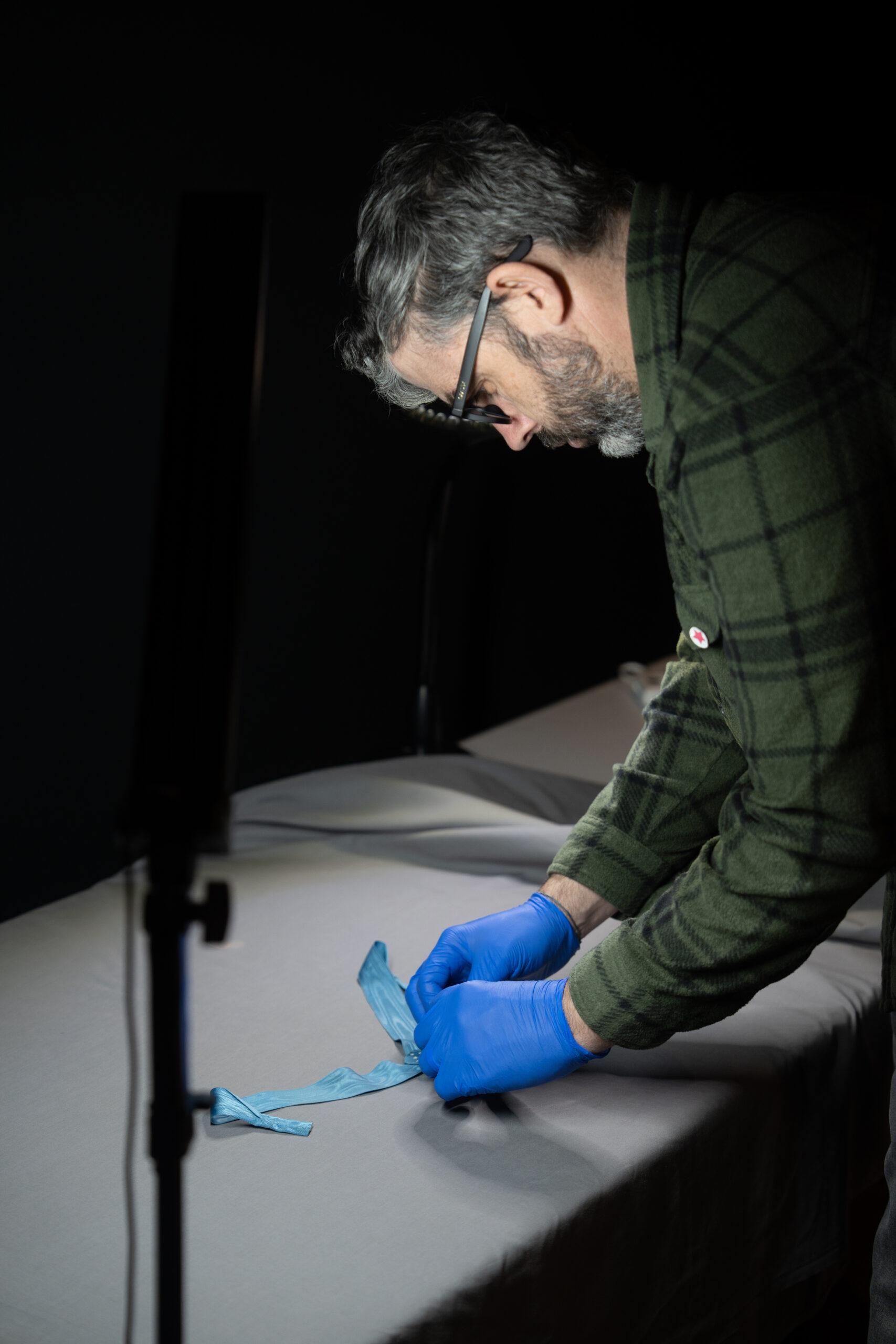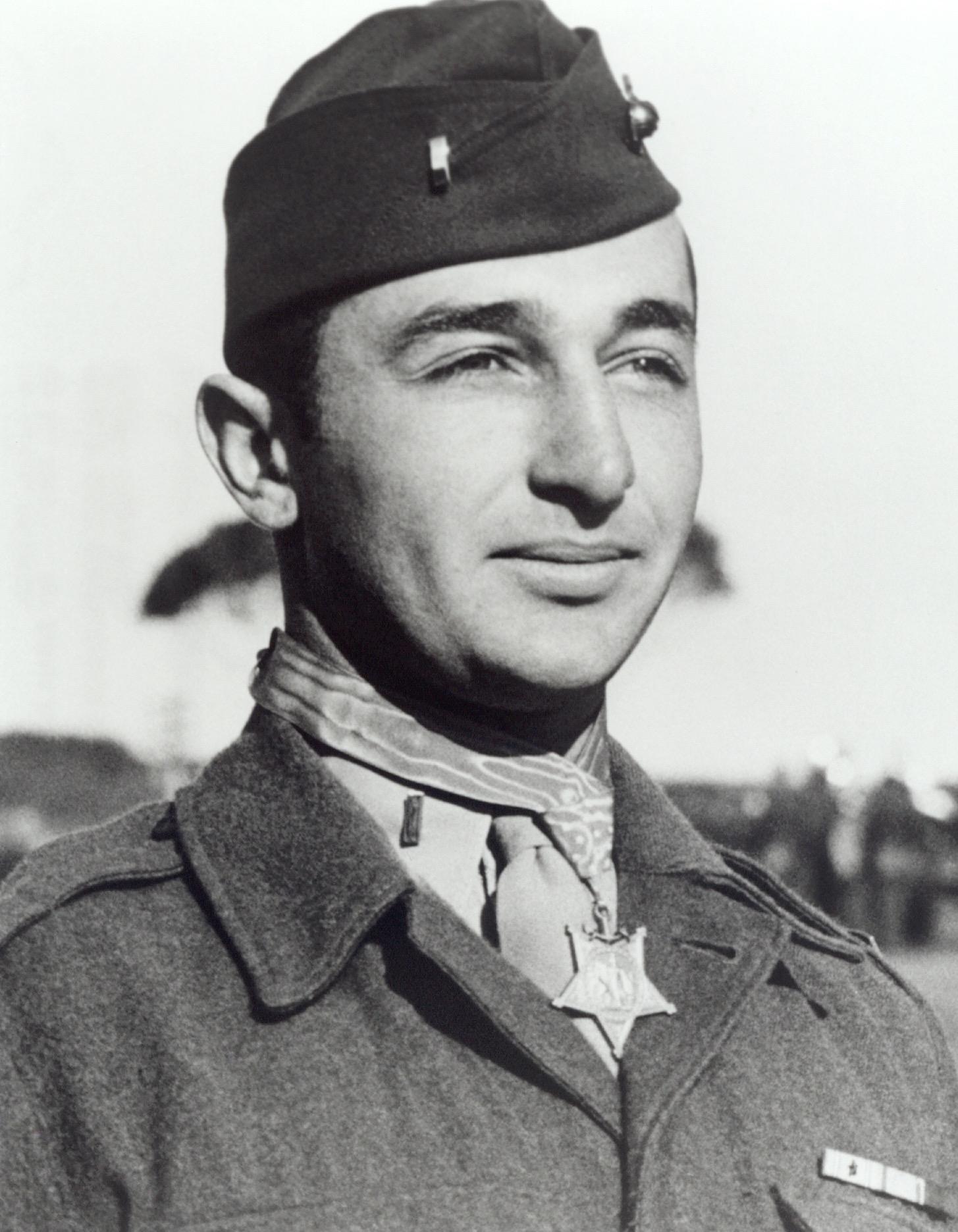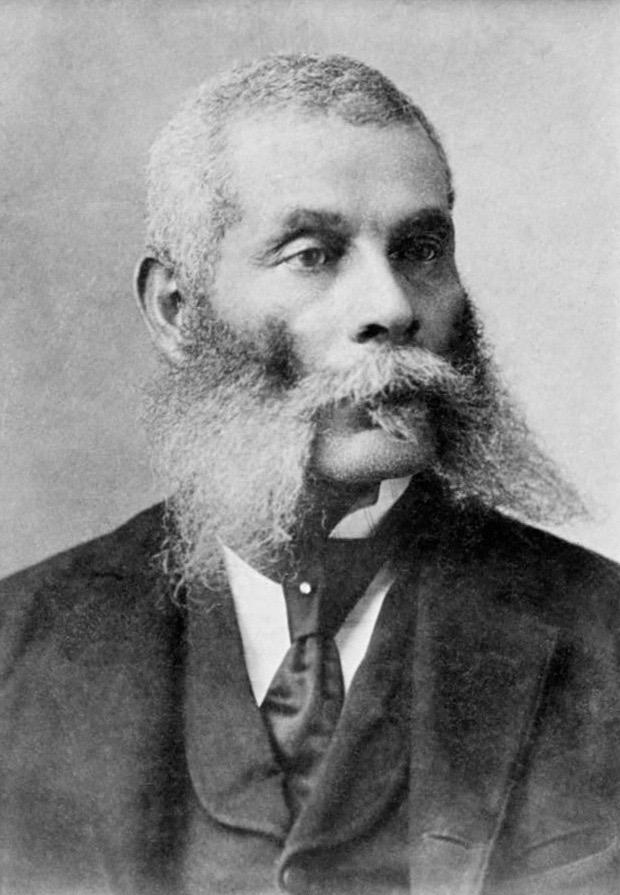More than a Medal: An interview with the Museum Curator
Meet Greg Waters, Director of Curatorial Affairs

Growing up in Phoenix, Arizona, Greg Waters was always fascinated by history and museums, even as a child. He pursued his passion for history at Arizona State University. During undergraduate studies, Greg came to realize that most museums have people working behind the scenes to create exhibits, help visitors learn, and support the growth, collection, and preservation of artifacts. This realization changed the course of his career plans.
After earning a master’s degree in Public History from Arizona State University, Greg took a job at the New Jersey Vietnam Era Museum. He oversaw the creation and production of temporary exhibits and became deeply interested in the personal stories of the individuals who had served in Vietnam. Greg knew right then that he wanted to create a special exhibit on Medal of Honor Recipients, and soon he had the opportunity to showcase the stories of the eight New Jersey Recipients who earned the Medal of Honor during the Vietnam War.
Following the exhibit’s success, Greg saw an opening at the National Medal of Honor Museum. He applied, got hired, and the rest, is, well — history. We recently sat down with Greg to get the inside scoop on his process for finding and locating every artifact for each exhibit at the Museum. Here’s what he shared about his experience.
In your experience, how long does it typically take to gather artifacts for a museum opening?
Greg Waters: Often, when museums are created, they are based around a pre-existing collection. To create a national-level museum and to start from scratch in terms of collections, and go get it all — that rarely happens.
My first day, my boss says, “Hey, we’re opening a national-level museum, and we have about four years till we open. We have no artifacts, and we need you to go find them all.” This began a worldwide scavenger hunt, trying to figure out where the artifacts were, who had them, how we would find them, and how we could get them.
Thankfully, I had the support of the Museum team and leadership to go out, make those relationships, and find things.
What was the process like collecting artifacts for the Museum?
GW: On the artifact hunt, I went to 40 states.
In the early days, it was cold-calling families and trying to explain to them what we were up to. A lot of that was relationship-building with Medal of Honor Recipients and Medal of Honor families. A lot of [artifact finding] involved traveling and meeting people where they were, and being able to meet them in person was critical.
Many museums have artifacts in their collections, so I was also reaching out to other museums, historical societies, and organizations, saying, “I noticed you have X. Can we put it on display? Can we borrow it?” Creating those loan partnerships and those personal relationships was key.
With over 3500 Medal of Honor Recipients, how do you decide which stories to tell?
GW: In the museum world, there’s such a thing as visitor fatigue; you can’t read endless stories. We tried to figure out the appropriate number of stories to tell. In the early days, it was becoming familiar with as many of the Medal of Honor stories as you can, and coming up with a list of about 50 Recipients. From there, it’s trying to figure out where the families and the artifacts live. Are they available? Based on that, you narrow it down because having authentic artifacts is critical to telling stories in a museum.
There are diversity metrics to consider — not only race and ethnicity, but service branch diversity, and conflict diversity. For example, there’s one Coast Guardsman [Recipient, Douglas Albert Munro], and one female [Recipient, Dr. Mary Walker]. You’re trying to come up with a list that adequately represents the Medal of Honor with all of those metrics in mind.
If two stories are fairly similar, but one of them has a lot of artifacts available, we would lean toward the one with artifacts. I think the Museum did a really good job of finding a balance between traditional museum experience, as far as written text panels and artifacts, and digital technology, which was important to us from the beginning.
What artifacts can visitors expect to see at the Museum?
GW: I think people might be surprised when they come to the Museum. There might be fewer military artifacts than they would expect. One of the first things you see when you walk in is Staff Sergeant Clint Romesha’s Future Farmers of America (FFA) jacket, which is one of my favorite things. The cool thing about that is the jacket design hasn’t changed. If a kid in FFA today walks in [and sees it], they immediately make that connection.
I got really excited about everyday items that tell fascinating stories. Like the notes Lance Corporal Kyle Carpenter’s mom was taking while she was on the phone, after learning he jumped on a hand grenade in Afghanistan. It’s frantically written in red marker, capturing this moment in his mom’s life, trying to take care of her kid from across the world, trying to get as much information as possible.
The other one I love is a note that George Day put on the door of the family home [when his dad, Bud Day, returned home from Vietnam after being held in captivity for 6 years]. It says, “Welcome Home, Dad, We Love You.” The fact that they saved it and that we were able to put it on display to create those connections to the rest of the family is amazing.
What do you hope visitors will take away from their Museum experience?
GW: Be open-minded to all of it. I’m hyper-aware that people come in with preconceived ideas of what our Museum is and what stories we’re trying to tell or how we’re trying to tell them. If you just read the Medal of Honor citations, these guys seem like superheroes, and that’s not relatable. We’re trying to humanize them by telling the rest of their life story, but elevating them so that people understand, respect, and appreciate their stories. Hopefully, we surprise people when they come in.
I think the key to doing that is the introductory video that you watch when you come into [the Museum]. At the end of it, Kyle Carpenter talks directly to the visitors saying, “You are worth it, you’re worth the time in this hospital bed, you’re worth the scars on our bodies.” The idea [is] that we are connected to these stories and that on some level, everything they did, they did for us.
Discover the Stories Behind the Artifacts
Currently, the Museum exhibits feature personal artifacts and intimate stories from four valiant Medal of Honor Recipients: Captain Lance Sijan, Colonel George “Bud” Day, Lance Corporal Kyle Carpenter, and Staff Sergeant Clint Romesha.
Captain Lance Sijan
A Wisconsin native, Lance Sijan was born on April 13, 1942, in Milwaukee. Following graduation from Bay View High School in 1960, Sijan went to the Naval Academy Preparatory School in Bainbridge, Maryland. He was a naturally gifted pilot and soon enlisted with the Air Force Academy, graduating in 1965.
During the Vietnam War, Sijan was assigned to the 480th Tactical Fighter Squadron, 366th Fighter Wing, and was stationed at Da Nang Air Base in South Vietnam, where he flew the F-4C Phantom, a two-seat fighter-bomber aircraft. November 9, 1967, marked Sijan’s 52nd combat mission — a bombing attack on the Ho Chi Minh Trail. But just as Sijan’s flight partner released the bombs, the plane went up in flames. Both men ejected.
Sijan’s parachute landed among a group of trees near the Laotian mountains, and he suffered deep cuts all over his body, a fractured skull, a mangled right hand, and a compound fracture to the left leg. He had no gear, and little food and water. Despite this, Sijan managed to avoid capture for 46 days in the jungle. On December 25, 1967, Sijan was captured by enemy forces. He escaped but was recaptured hours later. Eventually, Sijan was transported to Hoa Lo Prison where he was tortured and beaten, and where he also contracted pneumonia. He died in captivity on January 22, 1968, but his spirit of tremendous bravery continues to inspire service members.
Learn more about Recipient Sijan’s life before and after service here.
Colonel George “Bud” Day
As a child, George “Bud” Day enjoyed playing basketball with friends. In 1942, 17-year-old Day enlisted in the U.S. Marine Corps; he served on Johnson Island in the Pacific for two years during World War II. After the war ended, he married his high school sweetheart, Doris Sorenson, and earned a law degree from the University of South Dakota.
Day flew two tours as an F-84 Thunderjet pilot during the Korean War and served in the Air Force until the early 1960s. In 1967, Day, now 43, volunteered to serve in Vietnam. On August 26, 1967, Day’s plane was shot down, forcing him to eject. After being captured by enemy forces and escaping, Day was recaptured and eventually taken to “Hanoi Hilton,” a perilous prison camp. For five years, seven months, and 13 days, Day remained a prisoner of war (POW) until he and 108 other American POWs were released on March 14, 1973. Three days later, Day was reunited with his beloved wife, Doris, and their four children.
Day retired from the Air Force in 1977, started a law practice, and wrote two memoirs. He spent his free time advocating for medical benefits for veterans. Day is credited with passing the TRICARE for Life Act, which supports healthcare access for retired military service members.
Learn more about Recipient Day’s life, and see his personal artifacts here.
Corporal Kyle Carpenter
Growing up, Kyle Carpenter loved sports, competition, and finding ways to succeed. These traits ultimately led him to join the U.S. Marine Corps after graduation from high school. During recruit training, Carpenter impressed his drill instructor, Sergeant Luke Billingsley, with his effort, commitment, and dedication. After graduating, Billingsley gave Carpenter the Eagle, Globe, and Anchor insignia from his hat as a sign of respect.
On November 21, 2010, Carpenter and another Marine were stationed in Marjah, Afghanistan, during Operation Enduring Freedom. They patrolled the rooftop of a building while colleagues patrolled the ground below. Enemy fighters launched a surprise attack, and a hand grenade landed on the roof. Without hesitation, Carpenter covered the grenade with his body to save his friend’s life. When he returned to the States, Carpenter lay in a medically-induced coma. He relearned how to walk, sit, and stand, and had weekly surgeries as doctors worked to put his broken body back together.
Today, Carpenter shares his story with civilian and military groups nationwide. His words inspire and encourage others to live their life to the fullest. Carpenter takes his own advice — he’s gone skydiving, climbed mountain peaks, and run marathons — anything to push his limits and feel alive.
Learn more about Recipient Carpenter’s life before and after service here.
Staff Sergeant Clint Romesha
As a boy, Clint Romesha listened to his grandfather tell stories about landing on Normandy Beach during World War II. And he heard his father share tales about his closest friends during two tours in Vietnam. The legacy of family service deeply impacted Romesha, who enlisted in the Army shortly after his 18th birthday in 1999.
On October 3, 2009, Romesha and 50 soldiers woke to the sound of abnormal gunfire at 6 a.m. Their unit at Combat Outpost (COP) Keating in Afghanistan had been ambushed by 300 Taliban. As things went from bad to worse, Romesha devised a plan to get additional ammunition, close the COP’s gate to minimize enemy attacks, and retrieve fallen comrades. After securing a voluntary 5-man team and a sniper rifle, Romesha led the team in combat to complete the harrowing mission.
Following his heroic actions, Romesha struggled to accept the Medal because he felt like he had let down his brothers-in-arms who didn’t make it home. Today, though, Romesha uses the Medal as an opportunity to share stories and memories about fallen comrades. “Even though I got selected to wear it … I’m just a caretaker of it,” Romesha says. “We are united by the memory of battle but our lives are also joined … by the knowledge that the men who lost their lives are with us still because we carry them in our hearts.”
Explore Recipient Romesha’s life and learn more about his artifacts on display here.
Stay Informed with the Latest New
From groundbreaking announcements to exclusive stories, explore more updates from the National Medal of Honor Museum. Browse our latest press releases and articles to stay connected with our mission and milestones.

A Refusal to Surrender
Nov 22, 2024
Beyond the Medal: The Enduring Legacy of Hiroshi “Hershey” Miyamura
Jun 04, 2025
A Father's Fearless Leadership
Nov 22, 2024